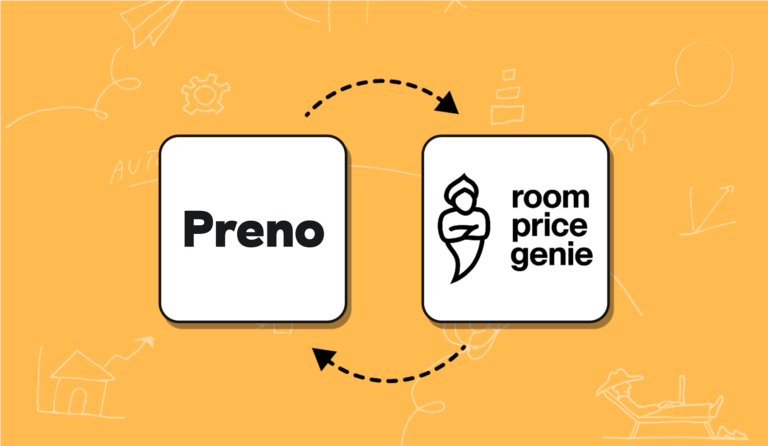Hotel revenue management is a critical strategic tool that helps hotels optimise their financial performance by aligning pricing strategies with demand. At its core, revenue management involves predicting, influencing, and responding to consumer behaviour to maximise revenue from room sales.
But it’s not just about selling the right room to the right guest at the right time for the right price. It also means choosing the best distribution channels, adjusting prices dynamically, and ensuring cost efficiency. This strategic approach enables hotels to make data-driven decisions, leading to enhanced profitability and sustained business growth.
This guide provides an introduction to hotel revenue management, its key principles, and how it drives profitability.
What is Revenue Management in the Hotel Industry?
Hotel revenue management is a strategic practice used by hoteliers to maximise financial performance by understanding and influencing consumer behaviour. In simple terms, it involves selling the right room to the right customer at the right time and price through the most efficient channel. This process ensures that hotels can optimise their revenue based on demand and market conditions.
More than just pricing rooms competitively, revenue management is about aligning room availability with consumer demand, while carefully balancing pricing strategies and distribution channels. This holistic approach not only increases profitability but also ensures long-term financial stability.
Definition of Hotel Revenue Management
Revenue management in the hotel industry can be summarised as the art and science of predicting demand and setting prices accordingly. The goal is to sell a hotel room for the best price possible without leaving inventory unused. Hoteliers who implement this practice efficiently can boost revenue while keeping operations smooth, even during off-peak times.
Hotel Revenue Management Basics: Key Principles
At the heart of revenue management lies the principle of selling the right room, to the right customer, at the right time, for the right price. But it doesn’t stop there. Successful revenue management also involves using the right distribution channel and maintaining cost efficiency.
Here’s a brief overview of how revenue management developed: In the past, hotels used basic rate-setting methods based on seasons or events. With the rise of advanced technology and big data, today’s revenue management has evolved into a highly dynamic practice that incorporates complex analytics to forecast demand and optimise pricing strategies in real time.
Core Principles of Hotel Revenue Management
At its core, hotel revenue management is based on several key principles that guide decision-making and strategy development. These principles include:
1. Demand Forecasting: Predicting future demand using historical data, market trends, and external factors allows hoteliers to dynamically adjust prices. By forecasting demand accurately, hotels can manage inventory more effectively, ensuring they’re prepared for both high and low seasons.
2. Price Optimisation: This involves setting the ideal price for each room, considering the demand, competition, and guest preferences. Price optimisation requires a deep understanding of how different customer segments respond to pricing, allowing hotels to tailor rates for each audience to maximise revenue.
3. Market Segmentation: Hotels don’t cater to a single type of guest, and revenue management recognises this. By dividing customers into distinct market segments based on factors like demographics, booking behaviour, and preferences, hoteliers can create targeted pricing strategies for each segment.
4. Inventory Control: Effective revenue management also involves ensuring that the right amount of rooms is available for each segment at any given time. By controlling inventory and dynamically adjusting availability, hotels can avoid overbooking or underutilising their rooms.
The Role of Data in Revenue Management
Data is the lifeblood of modern hotel revenue management. Today’s hotels rely heavily on data analytics to inform every decision. Historical booking data, real-time market trends, competitor pricing, and even global economic conditions feed into advanced revenue management systems (RMS) to provide actionable insights.
Revenue management for hotels explained using data-driven pricing example
Imagine a hotel that notices a pattern of increased demand during local festivals. By using data analytics, the hotel can predict that demand will spike during these events. The revenue management team can then raise room rates to capitalise on the high demand, ensuring the hotel maximises its revenue during peak periods.
Why Is Hotel Revenue Management Important?
Revenue management plays a vital role in a hotel’s success, allowing properties to stay competitive, especially in fluctuating market conditions. Hotels face constant pressure to adjust their prices based on consumer demand, seasonality, and external market forces. Revenue management helps to align operations with market demand, giving hotels a competitive edge.
Example: During high-demand periods like holidays or special events, a hotel using revenue management can raise its prices to take advantage of the surge in interest. Conversely, during quieter times, it can implement promotions and lower prices to attract guests and maintain steady occupancy.
Revenue Management Metrics: Key KPIs
There are several key performance indicators (KPIs) that hotels must track to measure the success of their revenue management strategies. These KPIs provide insight into how well a hotel is performing and help identify areas for improvement.
- ADR (Average Daily Rate)
- ADR measures the average revenue earned per sold room, calculated by dividing total room revenue by the number of rooms sold. It helps hotels assess their pricing performance.

- ADR measures the average revenue earned per sold room, calculated by dividing total room revenue by the number of rooms sold. It helps hotels assess their pricing performance.
- Occupancy Rate
- Occupancy rate refers to the percentage of available rooms that are sold during a specific period. High occupancy doesn’t always equal success—balancing occupancy with high rates is key.

- Occupancy rate refers to the percentage of available rooms that are sold during a specific period. High occupancy doesn’t always equal success—balancing occupancy with high rates is key.
- RevPAR (Revenue Per Available Room)
- RevPAR combines occupancy and pricing data, calculated by multiplying ADR by occupancy rate. This is considered the gold standard for measuring financial performance because it provides a more comprehensive view of how well a hotel is utilising its inventory and pricing strategies to generate revenue.

- RevPAR combines occupancy and pricing data, calculated by multiplying ADR by occupancy rate. This is considered the gold standard for measuring financial performance because it provides a more comprehensive view of how well a hotel is utilising its inventory and pricing strategies to generate revenue.
Example: High Occupancy vs. High RevPAR
If a hotel has a high occupancy rate but offers rooms at heavily discounted rates, its revenue might not be as high as a hotel with slightly lower occupancy but higher room rates. Focusing on RevPAR ensures that both rate and occupancy are optimised for maximum revenue.
If you’d like to continue to learn about all the important hotel related metrics you should be using, read our guide How to Calculate ADR and Other Hotel Metrics Every Hotelier Needs to Know.
The Evolution of Technology in Revenue Management
The advent of sophisticated hotel revenue management systems (RMS) has transformed how hotels operate. These tools provide advanced analytics that allow hotels to adjust pricing in real-time, forecast future demand, and distribute inventory more efficiently.
Dynamic Pricing Dynamic pricing is a game-changer in hotel revenue management. It involves adjusting room rates in response to market demand in real-time. For example, when demand is high (such as during holidays or major events), dynamic pricing tools automatically raise prices, allowing hotels to capture higher revenue.
Distribution Channels Technology has also revolutionised how hotels distribute their room inventory. From online travel agencies (OTAs) like Booking.com and Expedia to direct booking engines, modern RMS tools help hoteliers optimise their room availability across multiple platforms. This maximises visibility and ensures higher occupancy, while also helping hotels reduce dependence on third-party platforms that charge high commission fees.
Common Challenges in Hotel Revenue Management
- Overreliance on OTAs: While OTAs can help increase bookings, hotels often lose a significant portion of revenue to commission fees. Balancing direct bookings with OTA listings is crucial for long-term success.
- Market Unpredictability: Sudden shifts in consumer behaviour, economic downturns, or external events (such as a global pandemic) can disrupt demand, making it harder to forecast accurately.
- Competitor Pricing Pressure: Pricing wars can erode profitability. Hotels must focus on creating value for guests rather than simply undercutting competitors on price.
The Future of Hotel Revenue Management
So, what is hotel revenue management? Hotel revenue management is not just a tactical tool; it’s a long-term strategy that drives sustained financial success. As the hospitality landscape evolves, hotel revenue management remains a crucial strategy for optimising revenue. By mastering the core principles of hotel revenue optimisation, hoteliers can stay ahead of the competition and drive sustainable growth.





